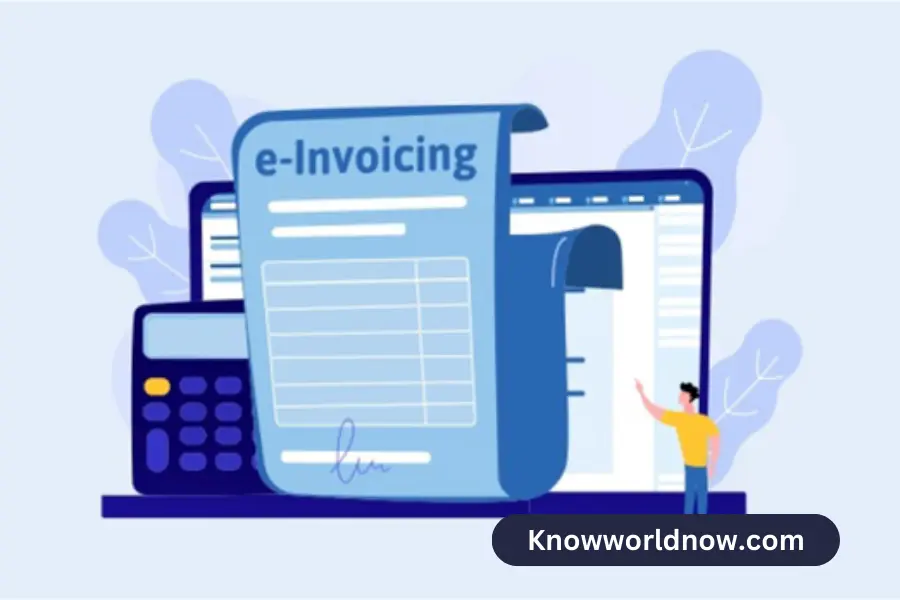Goods and Services Tax (GST) in many countries has brought about significant changes to the taxation system, aimed at simplifying compliance. And boosting economic growth. One of the key aspects of GST implementation is the adoption of electronic invoicing. But commonly known as e-invoicing.
E-invoicing has revolutionized the way businesses create, send, and process invoices. This brings many benefits to both taxpayers and the government. In this article, in the last part, we explain e-invoicing under GST.
Benefits of implementing e-invoicing under GST
E-invoicing is the process of creating invoices between suppliers and buyers in a standardized electronic format. It is also a digital method of verification and sharing. This involves the use of a centralized invoicing portal or system.
Integrates seamlessly with the GST Network (GSTN). It is a platform that facilitates GST administration. Here are some key benefits of implementing e-invoicing under GST:
- Enhanced Efficiency and Accuracy: E-invoicing eliminates the need for manual data entry, reducing the chances of errors and enhancing overall accuracy. It streamlines the invoice generation process, ensuring that invoices are generated correctly and in a standardized format. The automation of invoicing procedures reduces the time and effort required, allowing businesses to focus on more value-added tasks.
- Real-Time Invoice Tracking: With e-invoicing, both suppliers and buyers can track the status of their invoices in real time. This transparency helps in ensuring timely payments, reducing disputes, and improving cash flow management. It also provides visibility into the entire invoicing process, allowing businesses to identify bottlenecks and optimize their operations.
- Faster Payment Cycles: E-invoicing expedites the payment cycle by eliminating the delays associated with physical document handling and manual processing. Since invoices are electronically transmitted, they reach the recipients instantly, resulting in faster payment processing. This improves cash flow for businesses and promotes a healthier financial ecosystem.
- Reduced Compliance Burden: E-invoicing under GST automates the generation and validation of invoices, ensuring compliance with GST regulations. The system automatically performs various validations, such as verifying the GSTIN of the supplier and buyer, calculating the correct tax amount, and validating invoice details. This reduces the compliance burden on businesses, minimizing the risk of errors and non-compliance.
- Fraud Prevention and Better Tax Administration: E-invoicing introduces a higher level of security and integrity into the invoicing process, reducing the risk of fraudulent activities. The standardized electronic format and validation checks help prevent tax evasion, improving overall tax administration. The availability of real-time data also enables authorities to analyze transaction patterns and identify potential tax evaders more efficiently.
- Seamless Integration with GST Returns: E-invoicing integrates seamlessly with the GST return filing process. The invoice data captured electronically can be directly used for filing GST returns, eliminating the need for manual data entry. This reduces the chances of errors during return filing and ensures consistency between invoices and tax filings.
- Improved Business Relationships: E-invoicing fosters better collaboration and communication between suppliers and buyers. The streamlined invoicing process reduces disputes and discrepancies, enhancing trust and strengthening business relationships. It also facilitates faster resolution of issues, improving overall customer satisfaction.
Final thinking
In conclusion, e-invoicing under GST brings numerous benefits to businesses and the government alike. The adoption of electronic invoicing streamlines invoicing processes improves accuracy, enhances compliance, and promotes transparency.
By leveraging e-invoicing, businesses can streamline their operations, and improve cash flow. And strengthen their relationships with customers and suppliers.
As e-invoicing becomes more widely adopted, it is expected to further transform the way businesses operate and contribute to a more efficient and digitally driven economy.




